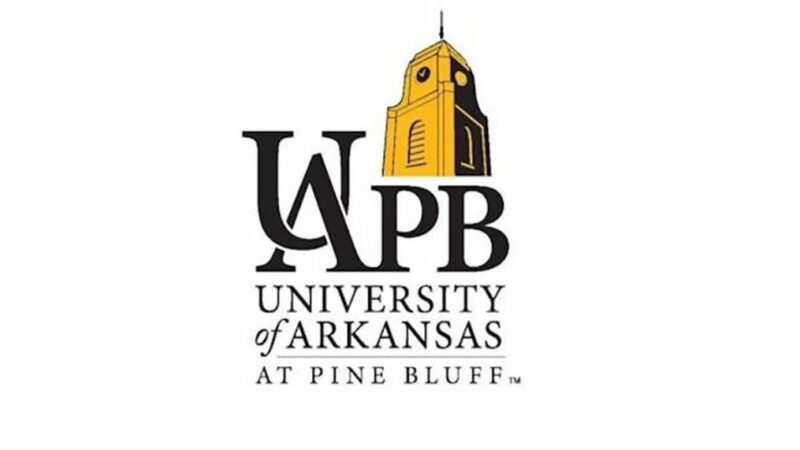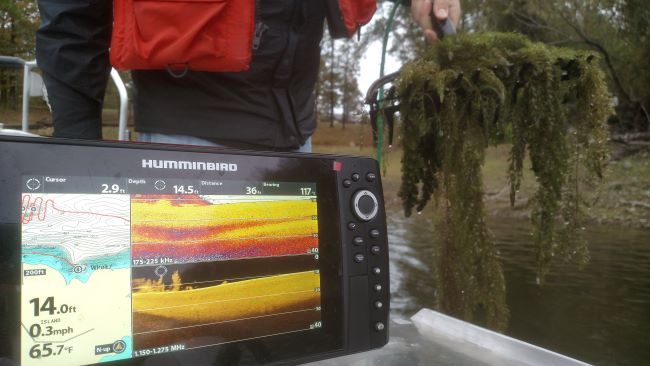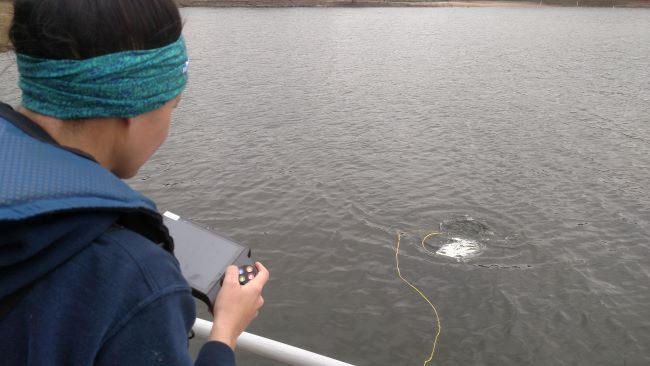
Pine Bluff, AR — An effort to reestablish aquatic vegetation in DeGray Lake is yielding positive results, Scott Jones, small impoundment Extension specialist for the University of Arkansas at Pine Bluff (UAPB), said. The project, which commenced in 2019, is a joint effort by UAPB, the Arkansas Game and Fish Commission (AGFC) and the U.S. Army Corps of Engineers.
“DeGray Lake, which is located in southwest Arkansas in the Ouachita Mountains foothills, once had one of the strongest black bass fisheries in the state and also supported an abundant aquatic plant community,” Jones said. “By 2010, however, a combination of biotic (animal/human) and abiotic (weather) factors negatively influenced the ability of aquatic vegetation to survive and reproduce. The result was a near complete loss of submersed aquatic plants in the lake.”
Around the same time, the quality of the black bass fishery declined to the point that anglers began requesting AGFC intervention regularly, he said. While it is difficult to find empirical evidence that an abundance of aquatic plants was directly responsible for a healthy black bass fishery in DeGray Lake, numerous studies have shown that fisheries tend to respond strongly to the condition of the aquatic plant community.
“We determined that one of the primary goals for reestablishment of native aquatic plants in DeGray Lake would be to enhance its overall ecological integrity and promote healthy populations of recreationally-important fish species,” Jones said. “Native aquatic plants for the project, including coontail, American pondweed and eelgrass, were grown in greenhouses at DeGray Lake. Once mature, these plants were transported by boat to floating vegetation dispersion cages attached to navigation buoys across the lake.”
The floating cages are not influenced by water level fluctuation, allowing them to effectively disperse plants regardless of weather conditions in a given year. They were stocked with coontail, which can spread by stem fragments. As waves and current flow through the cages, fragments of the plant stems break away and drift until they settle on the lake bottom. The hope was that some of those stems would attach to the lake bottom and begin new colonies of the plant.
For three years, Jones has been mapping and monitoring aquatic plant growth across 550 acres at 21 sites using down- and side-imaging sonar. Any vegetation detected by sonar was later verified with a remote-controlled submersible drone.
“Coontail, the main focus of AGFC’s vegetation re-establishment program, has expanded tremendously in DeGray Lake,” he said. “It is now found in 13 of 21 sites and has even begun forming surface mats up to 18 feet deep in some locations. Eight of 16 vegetation dispersion cages now have coontail growing directly underneath them, a potential sign that new colonies were formed as a result of the cages.”
Jones said the increase in abundance of submerged aquatic plants should increase the abundance of microbes and both invertebrate and vertebrate primary consumers, including several species of baitfish, crawfish and snails. In turn, this should increase the population and/or condition of secondary predators such as black basses and crappie.
“Vegetation may also provide anglers a more defined area to target for fishing and increase catch rates,” he said. “Encouraging the spread of abundant native aquatic plants could also help slow the spread of non-native plant species.”
The next phase of the project, which involves implementing lessons learned on DeGray Lake to other reservoirs that do not have a history of coontail growth, is already underway.
For more information on this and similar UAPB aquaculture/fisheries projects, contact Jones at [email protected].









